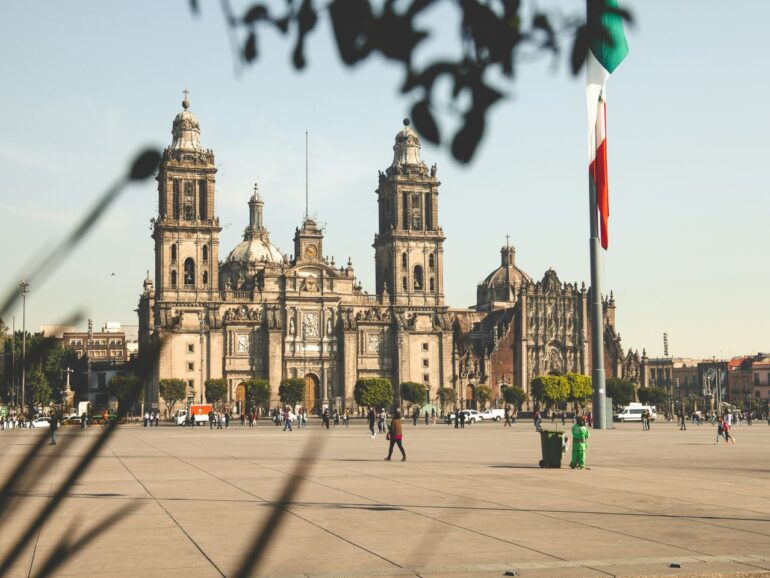Financial technology firms are eyeing Mexico’s vast market of 130 million individuals, an untapped frontier for both domestic companies and international endeavors. Yet despite strides in fintech, financial inclusion metrics lag behind, highlighting a disconnect between industry progress and broader adoption of financial products in this Latin American economy.
To be sure, Mexico’s fintech ecosystem is thriving, boasting nearly 1,000 companies, including 217 foreign entities from over 22 nations. Over the past five years, the domestic sector has demonstrated impressive growth, with a notable compound annual growth rate of 18.4% in the number of startups.
Fintech companies across the region have positioned themselves as a primary spearhead to address this challenge. Latin American central banks have often fostered their growth in recent years to support the inclusion of more people into the ecosystem.
Financial inclusion stagnated in Mexico
In Mexico, however, official data reveals little improvement. According to the country’s latest Financial Inclusion National Survey, published in 2023, the percentage of adults with at least one financial product -whether savings accounts, loans, insurance or pension accounts- remained stagnant at 67.8% in 2021, even slightly lower than the 68.4% recorded in 2015. This means almost 30 million Mexicans still remain outside of the financial system, even as fintechs have consistently grown in the past few years with an alleged focus on expanding the financial inclusion frontier.
“These data prompt reflection within the ecosystem,” suggests the joint report by Finnovista and Visa, which surveyed the situation of fintechs in Mexico. “Despite the wide array of fintech products aimed at financial inclusion, there is still a long way to go to reach a significant portion of the market.”
According to the report, 44.6% of all fintechs in Mexico have a clear objective: they aim at segments of underbanked individuals and businesses. However, most companies still focus on customers already operating within the traditional financial system, whether individuals or corporations.
Indeed, the number of Mexicans with savings accounts has increased, but from significantly depressed levels. While in 2015, 44.1% of adults reported having one, in 2021, that number was 49%, still notably lower than in most other Latin American countries. The government will release new results later this year, which could still show some improvement in more recent years.
Regulatory hurdles and financial inclusion in Mexico
“Most fintechs in Mexico rely on a client who is already banked,” said Daniel Medina Siller, a consultant in financial inclusion and a deputy fintech credit manager at Walmart’s Cashi, to Fintech Nexus. “Even to open an account, the requirement is a transfer of funding money via the Electronic Payment System (SPEI). In the case of cash availability, they must go to a bank branch to make the payment.”

According to the specialist, it is crucial for the advancement of financial inclusion to relax the requirements for non-banked clients. “It’s important that they are not forced to have a debit account or conduct transactions through traditional institutions to open accounts,” he says. “They should be able to receive a remittance or money transfer directly through the app without requiring the client to have a previous bank account.”
Fintech leaders often blame regulation as a key factor in Mexico’s struggle to establish a successful instant payment ecosystem similar to Brazil’s PIX, a phenomenal financial inclusion tool. While Brazil’s PIX saw remarkable success upon its launch in 2020, Mexico’s CoDi has faced challenges. Despite being available for years, most of the population remains completely unaware of CoDi, and only a few rely on it for everyday payments, according to data from the regulator.
Fintechs like Nubank are warming up to cash
Such a heavy reliance on cash has led even the most innovative fintechs to incorporate it into their offerings. Recently, Nubank, the largest digital lender in Latin America by number of clients, has partnered with a local department store to incorporate cash into its offering.
It announced a partnership with Mastercard’s Arcus that will allow its clients to deposit cash in a department store network in the country, thus providing a tool for underbanked Mexicans to gain access to digital banking easily.
“For many decades, the Mexican financial system has operated under conditions of low competition, which is also one of the main causes of the low financial inclusion results observed in the survey,” says Ernesto Calero, former president of Mexico’s fintech association. “Therefore, promoting the participation and growth of more digital finance companies that offer services more aligned with the conditions and needs of more population segments will allow us to reverse this negative trend in inclusion.”


